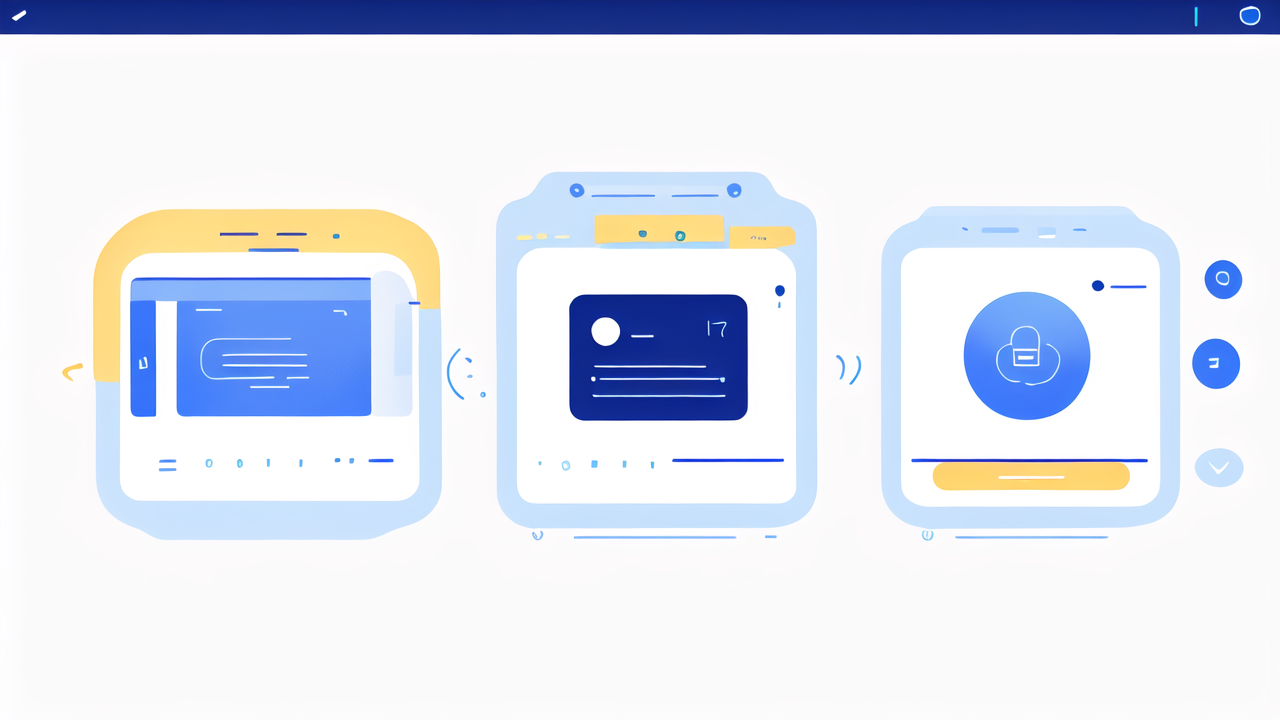Understanding Activity Trackers and Their Rise in Popularity
The Evolution of Activity Trackers
Activity trackers have come a long way since their inception. The earliest versions were simple pedometers that only measured steps. These days, modern trackers are small, wearable devices providing a wealth of data about various aspects of physical activity and health. They can count steps, measure distances traveled, and even track sleep patterns. Over the years, enhancements in technology have allowed for the integration of heart rate monitors, GPS functionality, and the ability to sync with smartphones for detailed analysis. This progression has transformed activity trackers from niche gadgets into mainstream accessories for the health-conscious individual.

Why Activity Trackers Have Become a Must-Have Fitness Tool
Activity trackers have skyrocketed in popularity, becoming a staple for fitness enthusiasts across the United States. The simple reason behind their must-have status is the increased awareness and accountability they provide. By constantly monitoring their daily activity, users gain valuable insight into their habits and are encouraged to stay on track with their fitness goals. The allure of setting targets and achieving them is heightened by the tangible data that trackers present, making every step, heartbeat, and calorie burned a part of their fitness narrative. This persistent tracking translates into healthier lifestyle choices and a more disciplined approach to physical well-being. As society grows more health-conscious, the demand for these devices only continues to surge, positioning activity trackers not just as a trend but as essential tools for a modern approach to fitness.
The Mechanism of Activity Trackers
How Do Activity Trackers Work?
Activity trackers have revolutionized the way we monitor our fitness by offering a deep insight into our daily activities. At their core, these devices operate using a blend of sensors and software algorithms. The most common sensor found in these trackers is the 3-axis accelerometer, which measures movement in every direction. This sensor captures data whenever you walk, run, or even just stand up. Some advanced trackers also include a gyroscope to determine orientation and rotation. Working alongside these are altimeters, which keep track of elevation climbed, especially helpful for those who hike or regularly take the stairs. The heart rate monitor is another critical sensor, tracking your pulse to gauge workout intensity and overall cardiovascular health. All these sensors work in unison, tirelessly collecting data that the software then interprets using complex algorithms. This process turns raw data into useful insights, like the number of steps taken, calories burned, and sleep quality. It's this seamless integration of hardware and software that enables activity trackers to provide a comprehensive view of our fitness and encourage a healthier lifestyle.
Different Types of Sensors Used in Activity Trackers
Activity trackers are ingenious devices packed with a variety of sensors that work collaboratively to monitor your physical activities. Each type of sensor has a specific role. For instance, accelerometers measure acceleration to count steps and determine if you're on the move. Gyroscopes provide orientation and balance information, helping to track the type of activity you're engaged in, such as running or cycling. Heart rate monitors measure your pulse to assess workout intensity and overall cardiovascular health. GPS sensors track your location and movements, particularly useful for outdoor exercises like hiking or marathon training. Some trackers also include altimeters to measure elevation for activities like stair climbing and mountain trekking. By combining data from these sensors, activity trackers provide a comprehensive overview of your daily fitness and help personalize your health metrics.
Setting and Achieving Fitness Goals with Activity Trackers
Establishing Realistic Fitness Objectives
Establishing realistic fitness objectives is crucial when utilizing activity trackers to reach your health goals. Start by assessing your current fitness level and daily activity. From there, set achievable targets, such as a specific number of steps per day or weekly exercise minutes. It's important to create goals that are challenging yet attainable to maintain motivation. Remember, gradual progress is key to long-term success. By setting incremental objectives, you can build on small victories, which will add up to significant improvements over time. Activity trackers are fantastic tools for monitoring your advancements and helping you stay on course with your personalized fitness journey.
Tracking Progress and Staying Motivated
Activity trackers are not just tools that measure your physical activity – they are also powerful motivators. By offering instant feedback on your performance, they make it possible to see the fruits of your efforts unfold in real-time. This is crucial for staying motivated. For instance, when you see that you've taken more steps than yesterday, it sparks a sense of achievement. Moreover, many trackers come with built-in goal-setting features that prompt you to push your boundaries daily, weekly, or monthly. They break down your long-term goals into manageable pieces, so you're not overwhelmed, but instead inspired to keep moving forward. Additionally, social features allow for sharing progress with friends, which adds a layer of accountability and support. Celebrating every little success along the way keeps your journey toward fitness full of enthusiasm and ambition.
The Impact of Activity Trackers on Daily Life
Integrating Activity Tracking into Your Daily Routine
Incorporating an activity tracker into your daily life can lead to significant health improvements. As people integrate these devices into their routine, they often experience a heightened awareness of their activity levels. Simple actions like opting for stairs instead of the elevator or walking during lunch breaks become part of a conscious effort to meet daily targets set by the tracker. This constant monitoring encourages a more active lifestyle, gently nudging users towards making healthier choices such as standing periodically if their job requires sitting for long hours. At home, trackers can prompt individuals to engage in light exercising or stretching, integrating fitness seamlessly into their daily lives. Over time, these small changes accumulate, leading to a more active, healthier lifestyle without overwhelming disruption to one's everyday routine.
The Psychological Benefits of Activity Monitoring
Monitoring activity with trackers can have profound psychological benefits. Firstly, they encourage a heightened sense of self-awareness. As individuals track their steps, heart rate, and sleep patterns, they become more in tune with their health and lifestyle choices. This awareness often leads to better decisions, like opting for stairs instead of an elevator or choosing a healthier meal. Having tangible data provides a clear picture of how small changes can make a big impact, which can significantly boost motivation and self-confidence. Additionally, setting and achieving fitness goals through these devices can generate a sense of accomplishment and improve mood. By offering reminders and celebratory notifications for goals met, activity trackers can make fitness feel less like a chore and more like an engaging journey. Lastly, for those facing health challenges or attempting to overcome sedentary habits, these trackers serve as a constant companion, providing positive reinforcement and support in making sustainable health improvements.
Choosing the Right Activity Tracker
Key Features to Look for in an Activity Tracker
When searching for the perfect activity tracker, it's vital to prioritize certain key features. Look for a device that offers comprehensive activity logging, including steps taken, calories burned, and distance traveled. A tracker with a built-in heart rate monitor can provide insights into your cardiovascular health. Sleep tracking can help you understand your rest patterns, essential for recovery and performance. Additionally, consider a water-resistant or waterproof design, especially if you swim or engage in water sports. A long-lasting battery life ensures minimal disruption, and a comfortable fit allows for all-day wear. Lastly, compatibility with your smartphone and other devices will allow for easy syncing and access to your data and progress.
Top-rated Activity Trackers in the United States
When selecting an activity tracker, it's crucial to consider the devices that have won favor across the United States. Here are some top-rated trackers known for their features and reliability:
- Fitbit Charge 5: With its sleek design and advanced health metrics, the Charge 5 continues to be a popular choice for those looking to monitor their fitness levels intensely.
- Apple Watch Series 7: It's not just a smartwatch; it's also a powerful fitness companion with numerous workout modes and comprehensive health tracking features.
- Garmin Vivosmart 4: Ideal for those passionate about outdoor activities, Garmin's fitness band provides robust data and a long-lasting battery life.
- Samsung Galaxy Fit2: Recognized for its affordability without sacrificing quality, this tracker offers sleep analysis, stress monitoring, and a vivid display.
- WHOOP Strap 4.0: This tracker stands out for its focus on recovery, sleep tracking, and providing personalized fitness insights.
It's important to assess the specs that matter to you, such as battery life, water resistance, and compatibility with your smartphone. Whether you prefer a simple band or a high-tech smartwatch, there's a trusted device that suits your fitness journey.
Activity Trackers and Social Connectivity
Sharing Your Progress with Friends and the Community
The world of fitness has been revolutionized by the social features of activity trackers, making it fun and engaging to share your journey to better health. Connect with friends and the broader community through your device, and let the encouraging words and shared experiences motivate you to push forward. Whether it's hitting a new step count, cycling extra miles, or mastering a challenging workout, announcing these victories can inspire others. Additionally, many activity trackers come with companion apps that feature social platforms. Users post updates, celebrate achievements, and even join groups aligned with their fitness interests. This fosters a sense of camaraderie and healthy competition that can be crucial in maintaining an active lifestyle. The shared aspect of online communities has a multiplicative effect on motivation, providing a digital cheerleading squad that cheers you on every step of the way.
Competing in Fitness Challenges and Achieving Milestones
Many activity trackers now offer features that allow users to engage in fitness challenges with others. By setting up competitions, individuals can push each other towards reaching new milestones. For example, friends can participate in a daily steps challenge or see who can run the furthest in a week. Such initiatives fuel motivation and break the monotony of solo workouts. They also provide a strong sense of accomplishment when milestones are achieved, encouraging sustained usage of the tracker. Leveraging these social connectivity features in activity trackers helps to foster a supportive and competitive environment, intensifying users' commitment to their fitness goals.
The Future of Fitness Tracking Technology
Innovations on the Horizon for Activity Trackers
The future of fitness tracking technology is poised for remarkable advancements. Innovations in the pipeline promise to enhance the experience and capabilities of activity trackers significantly. We can expect the integration of more precise sensors to monitor a wider range of physiological markers, from heart rate variability to hydration levels. Advancements in battery life and energy efficiency will allow users to track their activity for extended periods without frequent charging. Additionally, we might see the rise of non-invasive blood glucose monitoring, which would be a game-changer for diabetics and those monitoring their metabolic health. The development of smarter algorithms could offer more personalized feedback and actionable insights, making it easier to understand and optimize one's own health and fitness journey. As technology evolves, the seamless connectivity between trackers and other smart devices will likely become more robust, fostering an interconnected ecosystem that aides comprehensive health management.
How Data from Trackers Can Enhance Personal Health
Activity trackers are revolutionizing personal health management. With the vast amounts of data they collect, users gain detailed insights into their physical well-being. This data includes steps taken, calories burned, sleep patterns, and heart rate, which can all paint a fuller picture of one's health. By analyzing this information, individuals can identify trends and make proactive lifestyle changes. For instance, spotting irregular sleep rhythms can prompt efforts to improve sleep hygiene, while a consistent record of elevated heart rate may warrant a check-up with a healthcare provider. Furthermore, data from trackers can empower users to set more informed health goals and work towards them with precision. Overall, the ability to track and understand personal health metrics can lead to better long-term health outcomes and a more empowered approach to wellness.
Staying Safe and Maintaining Privacy
Understanding the Privacy Implications of Wearable Devices
As we welcome activity trackers into our lives, it's essential to grasp the privacy implications these devices carry. By incessantly collecting data on our movements, heart rates, and even sleep patterns, trackers amass a significant amount of personal information. Understandably, this raises concerns about who can access this data and how it might be used. Some trackers sync with our smartphones and apps, potentially exposing data to third parties without our explicit consent. Moreover, the intricacies of data storage and encryption by manufacturers also play a critical role in safeguarding our privacy. Therefore, acknowledging these concerns and remaining informed about the privacy policies of device manufacturers is crucial for protecting our personal information.
Best Practices for Protecting Your Data
Protecting your data when using activity trackers is crucial. To keep your personal information safe, consider the following best practices:
- Use Strong Passwords: Create unique, strong passwords for your activity tracker and associated accounts.
- Update Regularly: Ensure your device's software is up-to-date to benefit from the latest security features.
- Manage App Permissions: Be cautious about which apps can access your activity tracker data and adjust permissions accordingly.
- Enable Two-Factor Authentication: Where available, use two-factor authentication to add an extra layer of security.
- Be WiFi Wary: Avoid using public WiFi to sync or access your tracker data, as these networks can be unsecure.
- Check Privacy Policies: Before purchasing, read the privacy policy to understand how your data will be used and protected.
- Monitor Account Activity: Regularly check for any unusual activity in your tracker's account and take action if needed.
By following these steps, you can enjoy the benefits of your activity tracker while maintaining control over your personal data.




Leave a comment
This site is protected by hCaptcha and the hCaptcha Privacy Policy and Terms of Service apply.